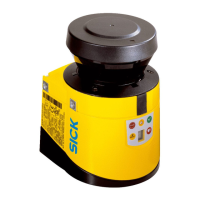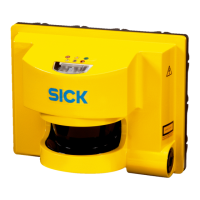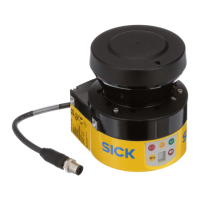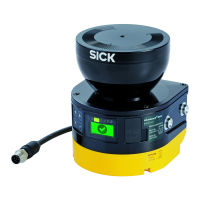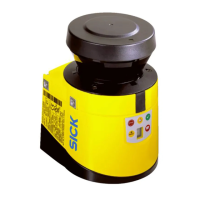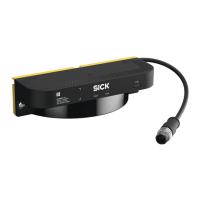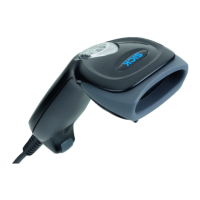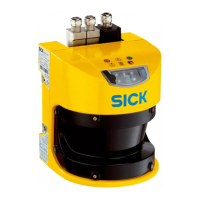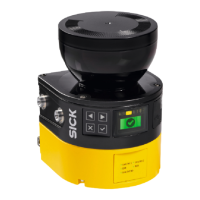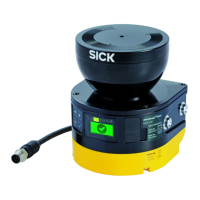►
T
est the function of the protective device. To do this, trigger the protective function
once and observe the safety output’s reaction using the reaction of the machine,
for example.
°
All applications: During the thorough check, observe whether the safety
laser scanner displays the interruption of the protective field using the LEDs
and/or the display.
°
Stationary application (hazardous area protection, access protection, hazard‐
ous point protection):
•
Interrupt the protective field with the intended test object and observe
whether the machine stops.
°
Mobile application (mobile hazardous area protection):
•
Place the supplied test object in the path of the vehicle and observe
whether the vehicle stops.
OR
•
A
ctivate a protective field, which is interrupted by at least one test object
and check the expected reaction (for example by an automatic test in
the safety controller).
If the thorough check reveals an error, the machine should be shut down immediately.
In this case, the mounting and electrical installation of the safety laser scanner must be
checked by appropriately qualified safety personnel.
Thorough check of the area to be protected
T
he area to be protected and the detection capability are checked during this thorough
check.
The thorough check covers the following points:
•
Changes in the detection capability (thorough check of all configured fields)
•
Modifications, tampering and damage to the protective device or the machine,
which lead to changes in the area to be protected or the position of the protective
field
Recommended approach for hazardous area protection:
►
Position the supplied test object at a number of points at the edges of the area to
be protected. The safety laser scanner must detect the test object at each position
and indicate the detection. How it is indicated depends on the configuration. The
number and position of sites where the thorough check is carried out must be
chosen so that undetected access to the hazardous area is impossible.
►
If a number of protective fields are used (in different monitoring cases for exam‐
ple), check the edges of all protective fields.
Recommended approach for access protection and hazardous point protection:
►
Move the supplied test object along the edges of the area to be protected. The
safety laser scanner must detect the test object at each position and indicate the
detection. How it is indicated depends on the configuration. The protective field
must be dimensioned such that reaching around or going around it is impossible.
►
If a number of protective fields are used (in different monitoring cases for exam‐
ple), check the edges of all protective fields.
►
If the reference contour monitoring feature is used, check the areas with the
reference contour:
°
Move the test object along the inner edge of the tolerance band of the
reference contour. The safety laser scanner must detect the test object at
each position and indicate the detection.
°
If several reference contours are used, test all reference contours.
Recommended approach for mobile hazardous area protection:
►
Place the supplied test object in the path of the vehicle and check whether the
vehicle comes to a stop in time.
PROJECT PLANNING 4
8027909/2023-02-22 | SICK O P E R A T I N G I N S T R U C T I O N S | nanoScan3 – EtherNet/IP™
53
Subject to change without notice
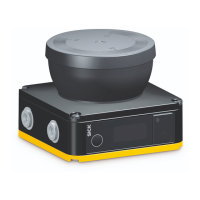
